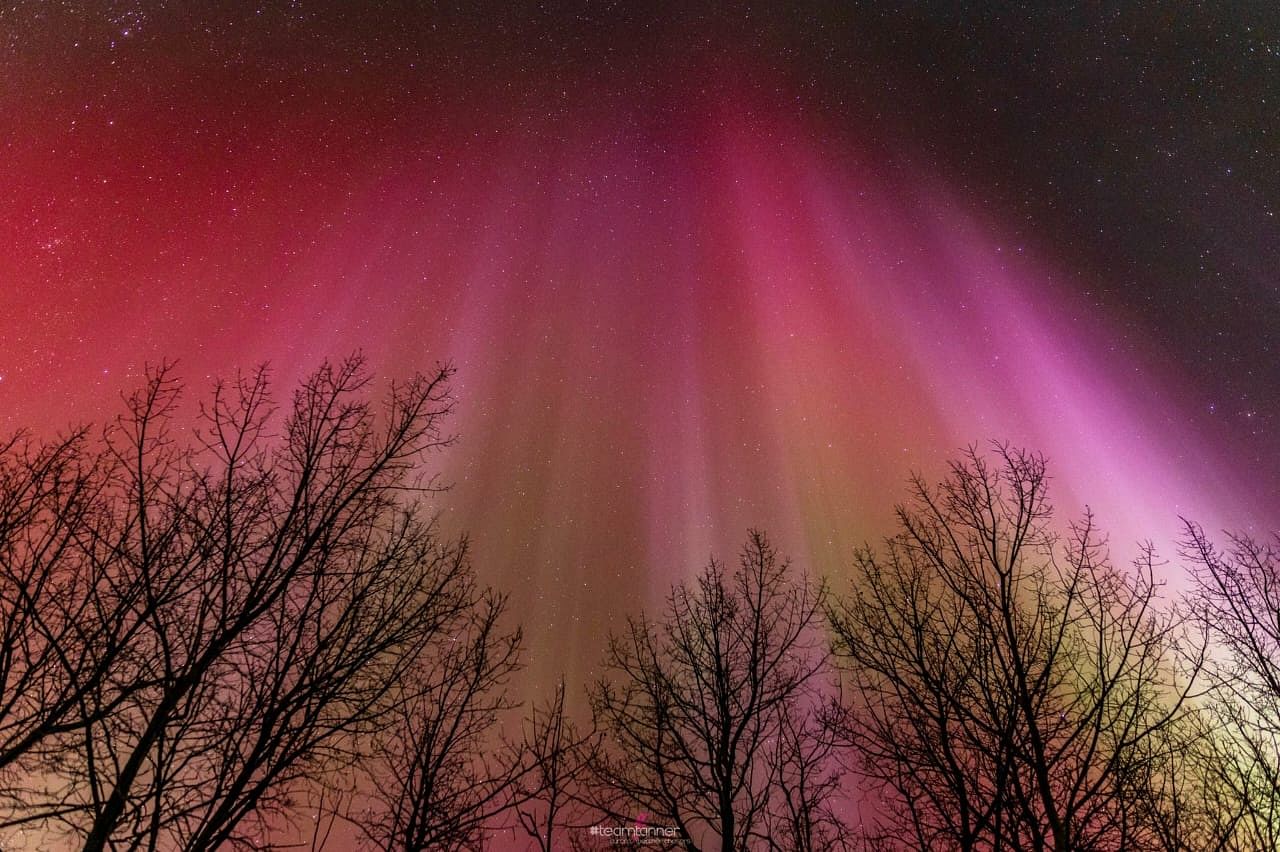
Indian astrophysicists on Thursday hit the bull's eye with their prediction of a "Diwali Storm" that lit up the polar and high latitude regions in spectacular displays of auroras triggered by a medium intensity solar flare.
Since the wee hours of Thursday, auroras have been reported from unexpected countries such as Scotland, Ireland, several US states and Canada with pictures of brilliantly lit northern skies flooding social media.
While solar scientists around the world, including those at the Indian Institute for Science, Education and Research (IISER), Kolkata predicted the auroras by closely tracking the flare and the solar storm that ensued, the Indian team comprising Suvadip Sinha and Dibyendu Nandi were bang on target.
IISER researchers forecast the arrival of the solar storm in the Earth’s atmosphere at around 2 am on November 4 with a speed of 768 km per second. In reality, the storm reached at around 1 am with a speed varying between 750-800 km per second.
For comparison, the prediction from the USA’s National Oceanic and Atmospheric Administration was that the storm will arrive at around 4:30 am on November 4 with a speed of less than 700 km per second.
"We were bang on target with our prediction. It was caused by an M-class (medium intensity) solar flare from an active region near disk center of the Sun (very close to the Sun-Earth line) which has launched a fast moving solar storm, which in turn trigger geomagnetic storms in the atmosphere to light up the night skies in northern latitudes,” Nandi told DH.
Since solar storms have earlier been named based on the day they have originated or impacted Earth, the Indian team suggested naming this one the “Diwali Storm”. In the past, there was a solar storm named after Bastille Day in 2000, a Halloween day storm that hit Earth in 2003 and a St. Patrick’s Day storm that occurred in 2015.
On November 2, a solar flare – a highly energetic phenomenon – occurred. When a flare occurs, the energy stored in such structures is converted to heat and light energy, generating intense X-ray radiation and accelerating charged particles in the Sun’s atmosphere to very high speeds.
The flare led to what is known as coronal mass ejection or a solar storm, which is among the largest explosions in the solar system generating as much energy as a billion atomic bombs.
The scientists knew the solar storm had a better chance of reaching the earth because of the location of the flare. Space weather alerts were issued because of the storm’s ability to cause damages to satellites, navigation systems and undersea internet cables.
“Forecasting solar flares ahead of time is a difficult task. Predicting the arrival times and impact of a coronal mass ejection or CME is even more challenging as observations are sparse in interplanetary space and the trajectory of these storms is governed by complex mechanisms,” Nandi added.
